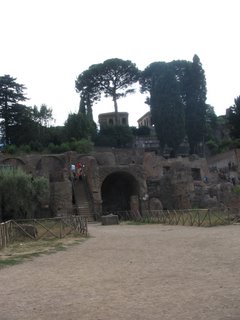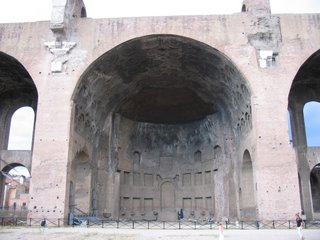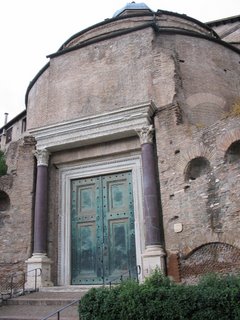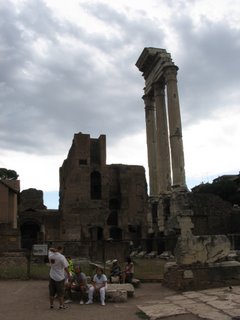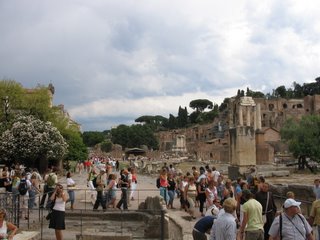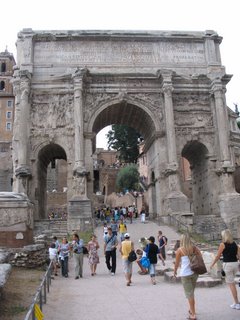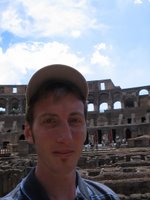Rome Part V - Il Ritorno alla Svezia
On Monday it was time to return to Ronneby. I made my way back down to the Termini. Unfortunately, I had forgotten how long the station was. Of course, the platform from which the Leonardo Express was the furthest from where I entered and of course the train departed as soon as I arrived at the station. I noticed that it left exactly on time. I just had to wait around for half an hour for the next one. Unfortunately, it was 10 minutes late. It seems to be just my luck whenever I try to leave Italy. Two years ago, I caught the train from Rome to Milan. It was an hour late, and I only made the plane by the proverbial skin of my teeth. This time I was not so lucky. With all the recent terrorism events, they now close flights earlier. Even though I had no cargo baggage, I was stuck at Fiumicino. There was another flight an hour later. I got in line to try to get tickets, however they were so slow that that time passed before I even made it to the front of the queue. I had to buy a ticket for the flight after that, which was six hours later (rather weird flight time spacings). That meant a lot of time waiting around in the terminal. I also at that time found out that I would miss the last train from Copenhagen.
I arrived at Kastrup Airport around 11pm. The first train on Tuesday morning was at 4:16am. That meant I had to sleep in the airport for 5 hours. After much searching, I found the place where they kept the rows of seats, mainly for people sleeping. Unfortunately, everyone else had the same idea and they were full up. So I tried to sleep on the floor. No sooner had I attempted this, but one of those ride-on floor cleaners came by and forced me to move. So I moved down the corridor. A few minutes later, the cleaners found me again! So I went back out into the arrivals area. There were hardly any chairs there, but I noticed that the cleaners had just been through. I managed to find a seat in the corner behind a staircase and settled in to try to sleep. Things were fine until about 2am, when the ride-on cleaners were back!! They had just cleaned the area two hours earlier, at a time when there were no flights, and they were back again!
Well eventually the time came to get the train to Malmö, and then to change trains at Kristianstad. On the way, I took this photo of the sunrise in Skåne. It's not very good, but it was the best I could do on a moving train.

Then I caught the bus to Ronneby, walked home to have breakfast, and then went in to work.
 Here are some of the people in our tour group. The building to the right is a recent addition to the area from the last few centuries or so. It was not around in Ancient Rome. I did not go in, but I think it is the bookshop.
Here are some of the people in our tour group. The building to the right is a recent addition to the area from the last few centuries or so. It was not around in Ancient Rome. I did not go in, but I think it is the bookshop.



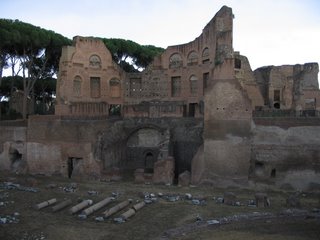


 I looked around all over the place and finally found the booth on the south side of the forum. I purchased the guide for a few Euros. It's like you're talking on one of those chunky satellite phones. There were two mini-tours. I started on the second of them, as it began very close by. It basically followed the Via Sacra, or Sacred Way. The first stop was the Arch of Titus.
I looked around all over the place and finally found the booth on the south side of the forum. I purchased the guide for a few Euros. It's like you're talking on one of those chunky satellite phones. There were two mini-tours. I started on the second of them, as it began very close by. It basically followed the Via Sacra, or Sacred Way. The first stop was the Arch of Titus. It is the highest point in the Forum. Here is a close-up of the inscription on the arch.
It is the highest point in the Forum. Here is a close-up of the inscription on the arch. Following the path westward, here is a view of part of the Palatine Hill, looking south.
Following the path westward, here is a view of part of the Palatine Hill, looking south.